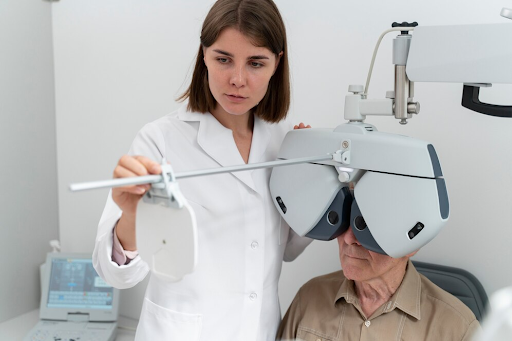What to Expect from Modern Eye Surgery Procedures

In recent years, advancements in eye surgery have dramatically transformed how vision correction is performed. With the development of innovative techniques, patients now have access to safer, more precise procedures. Two of the most popular modern eye surgeries are SMILE Corrective Surgery and LASIK Eye Surgery. These methods have revolutionized the field of vision correction by providing quick recovery times and highly accurate results. Understanding what to expect from these procedures can help patients make informed decisions about their eye health.
Understanding LASIK Eye Surgery
LASIK, or Laser-Assisted In Situ Keratomileusis, is one of the most well-known eye surgery procedures. It is designed to correct vision problems such as nearsightedness, farsightedness, and astigmatism. The lasik eye surgery procedure involves creating a thin flap on the cornea, followed by reshaping the corneal tissue underneath using a laser. This reshaping helps to improve the eye’s ability to focus light correctly onto the retina.
Patients undergoing LASIK can expect a quick surgery, usually lasting only about 15 minutes for both eyes. Recovery time is also relatively short, with most patients noticing an improvement in their vision within 24 hours. LASIK has been a preferred choice for many due to its high success rate and minimal discomfort during the healing process.
The Rise of SMILE Corrective Surgery
While LASIK remains popular, SMILE Corrective Surgery (Small Incision Lenticule Extraction) has emerged as a newer and less invasive alternative. SMILE offers the same vision correction benefits as LASIK but without the need for creating a corneal flap. Instead, SMILE uses a femtosecond laser to create a small lenticule within the cornea. This lenticule is then removed through a tiny incision, which allows for reshaping of the cornea.
One of the key advantages of SMILE is that it is a minimally invasive procedure, reducing the risk of complications associated with flap creation. This method also leads to faster recovery times and less discomfort. Patients can expect similar visual outcomes to LASIK, with the added benefit of a more stable cornea post-surgery.
What to Expect Before Surgery
Before undergoing either LASIK or SMILE, patients will have a thorough consultation with their eye surgeon. During this consultation, various tests are conducted to assess the patient’s eye health and determine the suitability of the procedure. Eye measurements, corneal thickness, and vision correction needs are carefully evaluated to ensure the best possible outcome.
Patients are advised to stop wearing contact lenses a few weeks before the surgery, as they can temporarily alter the shape of the cornea. Additionally, it is important to follow the surgeon’s pre-surgery instructions to ensure optimal results. On the day of the procedure, patients can expect a quick and painless experience, typically performed under local anesthesia.
Post-Surgery Recovery
Recovery times for both LASIK and SMILE are relatively short, but there are some differences. LASIK patients can expect mild discomfort or a gritty sensation in the eyes for a few hours post-surgery. However, vision usually improves rapidly, and most individuals return to their normal activities within a day or two. Eye drops and protective shields are typically prescribed to aid in the healing process and prevent infection.
SMILE patients may experience even less discomfort after surgery. Since there is no flap creation, the risk of flap-related complications is eliminated, leading to a faster healing process. Many SMILE patients can resume regular activities within a day, although the full recovery may take slightly longer than LASIK.
Conclusion
Modern eye surgery procedures like LASIK and SMILE have revolutionized vision correction. These innovative techniques provide patients with fast recovery times, minimal discomfort, and long-term benefits. Whether you choose LASIK or SMILE, both surgeries offer an effective solution for achieving clear vision. Consulting with an experienced eye surgeon is essential in determining the best procedure for your needs.


